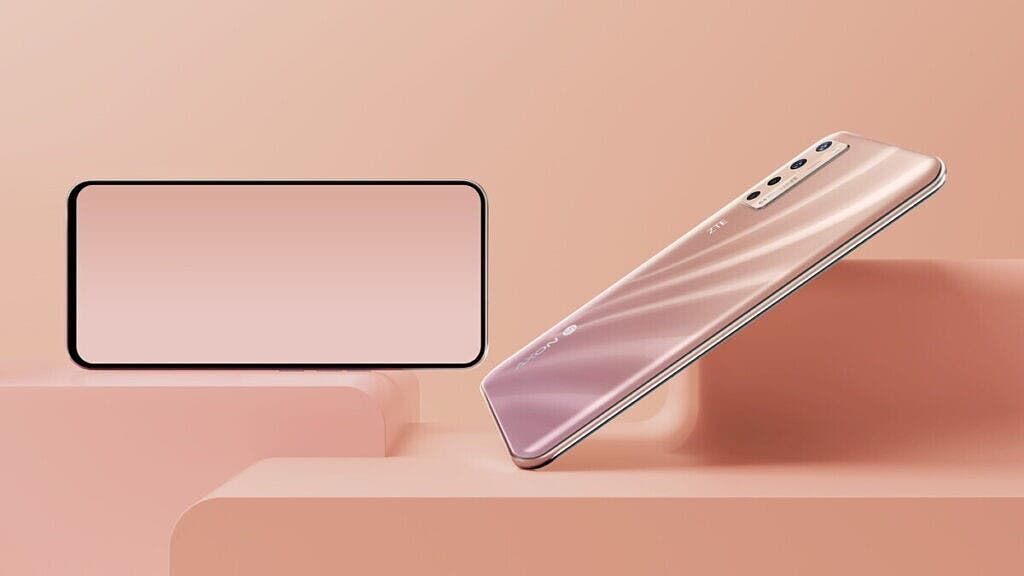The concept of full screen smartphones has been quite popular for several years. During the past 5-6 years, we saw various forms of notch screen, lifting front camera, water drop screen, and hole-punch screen. However, to achieve a true full-screen effect with no addition structures and notches, there is only one way – under-screen camera.
Xiaomi vs ZTE
Recently, Xiaomi and ZTE have had a war of words around the under-screen camera technology. ZTE officially released the Axon 20 5G on September 1. It is known as the world’s first commercial under-screen camera phone. And though Xiaomi hasn’t announced a similar phone yet, it released the so-called ‘third-generation under-screen camera technology’ on August 28. Mass production of this technology will have to wait until next year.

In fact, the first-tier China-based manufacturers have been preparing for under-screen camera technology for a long time. Although many products using lift camera technology have been launched earlier and have achieved a 100% screen-to-body ratio to a certain extent, this solution has also brought many drawbacks: the weight and thickness of the smartphone have increased a lot. Plus, they are not waterproof.
At the MWC Shanghai exhibition in 2019, OPPO demonstrated a prototype using under-screen camera technology. VIVO also used under-screen camera technology on the concept phone APEX 2020 released this year. We mean almost all major smartphone brands have been keeping this in the spotlight.
Unlike notch screens, water drop screens, and hole-punch screens that destroy the integrity of the front screen, the under-screen camera technology directly places the front camera under the screen. But it should solve the problem of light transmittance in the screen camera area. Otherwise it will affect the photo effect of the front camera. How to ensure the integrity of the front screen display and the photo effect? This has become a difficult problem blocking the mass production of under-screen camera technology.
According to Ni Fei, President of ZTE’s Terminal Business Unit, ZTE has adopted five technologies: ultra-high-transparent micron-level new materials, independently driven screen display chips, highly integrated and minimal circuit design, original natural pixel arrangement, and triple front-viewing algorithms. As a result, they could realize mass production of under-screen camera. He also revealed that ZTE started developing under-screen camera technology two years ago.
However, before the ZTE conference, Xiaomi officially released the ‘third-generation under-screen camera technology’. Lei Jun, Chairman and CEO of Xiaomi, stated that Xiaomi produced the first generation of under-screen camera technology in June 2019. It is based on transparent cathode and anode materials that laid the foundation for the subsequent development of under-screen camera technology. In October 2019, they produced the second-generation screen. It used the following concept – some part of the pixels display the picture while the other part used for light entrance. The third generation of Xiaomi’s under-screen camera technology came with a full pixel display. It achieves the balance of display effect and selfie performance.
It is worth noting that Lei Jun also emphasized that the current mainstream in the industry is the second-generation off-screen camera technology made by Xiaomi in 2019. The implication is that Xiaomi’s third-generation off-screen camera technology leads ZTE. After this, Ni Fei responded to Lei Jun on Weibo, saying ‘Welcome more manufacturers and ecological developers to work together to build a better true full-screen ecology’.
Is the ZTE Axon 20 5G So Good?
Well, the war of the words will never end. But is the Axon 20 5G so good? Some media has also reviewed it, most scenes achieved a balance between screen display and photography. But for example, under the light, the rectangular outline of the camera is faintly visible. When you use the front camera to take a selfie with backlight, you will also see the image quality decline.
In other words, although ZTE has mass-produced the technology on smartphones, the experience in some scenarios is not perfect. However, from the perspective of the evolution of new technologies, the mass production of under-screen camera technology has finally taken a crucial step.






Place comments
0 Comments
You are currently seeing only the comments you are notified about, if you want to see all comments from this post, click the button below.
Show all comments